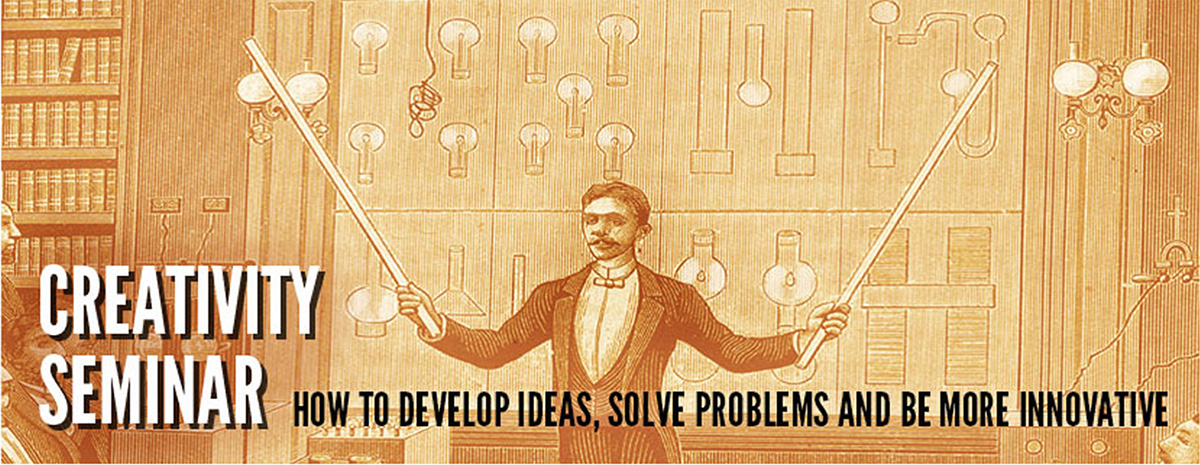• Create the space to innovate

• Get a broad variety of viewpoints
• Create a conversation between management and staff
• Create a conversation between management and staff
• Participants should be pulled to join, not pushed
• Tapping unused talent keeps development costs low
• Collateral benefits are as important as the innovations
• Demonstrable value is key
To make the case for the need for Innovation Communities, the authors present a sidebar article that explains why tapping into employees' imaginations through traditional routines rarely produces results.
Three factors are blamed:
(a) Senior management doesn't see the potential. They look to outside managers for new ideas.
(b) Managers suppress employee imagination. Problems and possible solutions aren't shared up and down the chain of command. Each end doesn't feel comfortable talking to the other.
(c) Managers don't know how to use employee imagination. Suggestion boxes generally fail. Research shows that creativity is generally not stimulated (and may in fact be harmed) by financial incentives.

This third explanation brings to mind a remarkable study that explored the related topic and delved deeply into the question: If you were paid more money would you produce more creative work? Teresa Amabile, who has investigated the intersection of business and creativity as a professor at the Harvard Business School, found that the answer is a surprising "no."
For over 30 years, Teresa Amabile has researched and written about creativity, innovation, and the motivational forces that influence them in individuals, teams, and organizations. This work has led to her prominence as one of the leading experts in the field. Using both laboratory experiments and field research, Teresa discovered the intrinsic motivation principle of creativity:
People are most creative when they are motivated primarily by the interest, enjoyment, satisfaction, and challenge inherent in the work itself. In addition to providing a comprehensive theory of creativity, Amabile’s work in this area has led to a method for assessing creativity and a set of prescriptions for supporting creativity and innovation.
See her article, Creativity Under the Gun, about the surprising effect that deadlines have on creative work.
Although high levels of time pressure usually hamper creativity, and low-to-moderate levels are generally optimal, there are certain (rare) conditions of high time pressure under which creativity can thrive. The keys are motivation and focus.
(Amabile, T.M., Hadley, C.N., and Kramer, S.J. (2002). Creativity under the gun. Harvard Business Review, August 2002, 52-61.)
 Teresa Amabile (Photo: Kris Snibbe/Harvard News Office)
Teresa Amabile (Photo: Kris Snibbe/Harvard News Office)
• Collateral benefits are as important as the innovations
• Demonstrable value is key
To make the case for the need for Innovation Communities, the authors present a sidebar article that explains why tapping into employees' imaginations through traditional routines rarely produces results.
Three factors are blamed:
(a) Senior management doesn't see the potential. They look to outside managers for new ideas.
(b) Managers suppress employee imagination. Problems and possible solutions aren't shared up and down the chain of command. Each end doesn't feel comfortable talking to the other.
(c) Managers don't know how to use employee imagination. Suggestion boxes generally fail. Research shows that creativity is generally not stimulated (and may in fact be harmed) by financial incentives.

This third explanation brings to mind a remarkable study that explored the related topic and delved deeply into the question: If you were paid more money would you produce more creative work? Teresa Amabile, who has investigated the intersection of business and creativity as a professor at the Harvard Business School, found that the answer is a surprising "no."
"Since coming to HBS in 1995 from the psychology department at Brandeis University, she's engaged in a longitudinal study to "track creativity in the wild," she says. Poring over 12,000 electronic diaries submitted by workers in seven companies, she's encountered some myth-busting answers to what makes creativity tick in the work environment - and what grinds it to a halt.(From Beth Potier's article in Harvard Science magazine.)
Money, it turns out, does not foster creativity; Amabile found that people doing creative, innovative work do not focus daily on salary or a potential bonus. Ditto for severe deadlines, which despite common perceptions generally stifle creativity. Competition and fear of retribution also hinder employees from doing their most creative work, she found.
While these findings might chafe against popular management wisdom, they support Amabile's core hypothesis, formulated in social-psychological laboratory experiments, that creativity is a product of intrinsic motivation. "That's being motivated to do the work because it's interesting, it's positively challenging, it's captivating," she says. On the flip side, extrinsic motivators - expected evaluation, competition, anticipated reward - tend to decrease creativity.
For over 30 years, Teresa Amabile has researched and written about creativity, innovation, and the motivational forces that influence them in individuals, teams, and organizations. This work has led to her prominence as one of the leading experts in the field. Using both laboratory experiments and field research, Teresa discovered the intrinsic motivation principle of creativity:
People are most creative when they are motivated primarily by the interest, enjoyment, satisfaction, and challenge inherent in the work itself. In addition to providing a comprehensive theory of creativity, Amabile’s work in this area has led to a method for assessing creativity and a set of prescriptions for supporting creativity and innovation.
See her article, Creativity Under the Gun, about the surprising effect that deadlines have on creative work.
Although high levels of time pressure usually hamper creativity, and low-to-moderate levels are generally optimal, there are certain (rare) conditions of high time pressure under which creativity can thrive. The keys are motivation and focus.
(Amabile, T.M., Hadley, C.N., and Kramer, S.J. (2002). Creativity under the gun. Harvard Business Review, August 2002, 52-61.)
 Teresa Amabile (Photo: Kris Snibbe/Harvard News Office)
Teresa Amabile (Photo: Kris Snibbe/Harvard News Office)